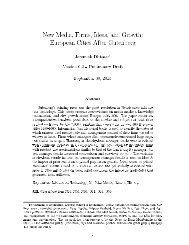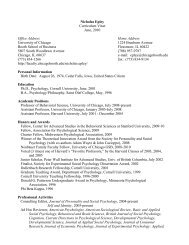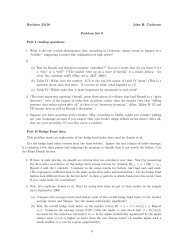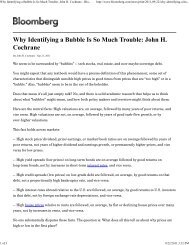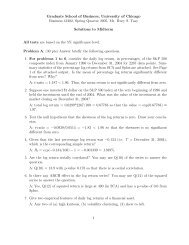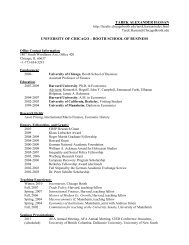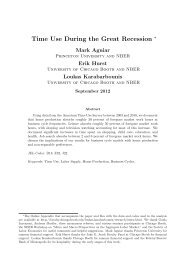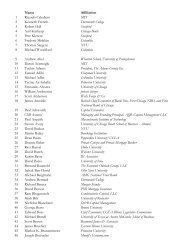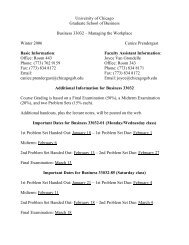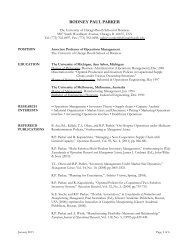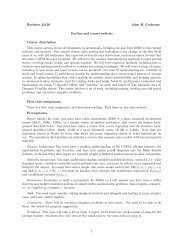by Milton Harris and Artur Raviv - Faculty
by Milton Harris and Artur Raviv - Faculty
by Milton Harris and Artur Raviv - Faculty
Create successful ePaper yourself
Turn your PDF publications into a flip-book with our unique Google optimized e-Paper software.
order <strong>and</strong> in which contingencies they should be used. The problem is vastly simplified, however, <strong>by</strong> the<br />
assumption that the middle managers have no variable costs. It follows that it is optimal to use any<br />
middle managers that are available.<br />
In the next three subsections, we analyze in turn the cases of no middle managers, two middle<br />
managers, <strong>and</strong> all four middle managers, respectively.<br />
3.1 No Middle Managers: Centralized <strong>and</strong> Decentralized Flat Structure<br />
When no middle managers are employed (i.e., the structure is flat), the problem is simply to<br />
decide whether to refer all four projects to the CEO or to give up any coordination benefits <strong>and</strong> let the<br />
project managers run the projects. We refer to the flat structure when all projects are referred to the CEO<br />
as the centralized flat structure. The expected benefit of this structure is the expected benefit from<br />
coordinating the four pairwise interactions, p+p+r+r, plus the synergy gain, s, from the company-wide<br />
interaction times the probability of the company-wide interaction, p 2 r 2 . The cost of referring projects to<br />
the CEO is her opportunity cost, Q. Therefore, expected net profit for the centralized flat structure is<br />
2(p+r)+p 2 r 2 s Q. We refer to the flat structure when no projects are referred to the CEO as the<br />
decentralized flat structure. In this case, there are no coordination benefits <strong>and</strong> also no costs, so the<br />
expected net profit is zero. Therefore, the net value of the flat structure is<br />
3.2 Two Middle Managers: Hierarchies<br />
V F max$2(p r) p 2 r 2 s Q,0�. (1)<br />
In this subsection we consider the problem assuming that only two middle managers are<br />
available. Since interactions are identical within a group, either P or R, there are only two relevant cases:<br />
only managers in M R are available or only those in M P are available. 6 We consider, for each case, the<br />
6 There is one other possibility, namely employing one manager from each of MP <strong>and</strong> M R. This<br />
structure does not, however, resemble a hierarchy (since one project will be referred to two middle<br />
managers) or any other commonly observed organizational forms. Consequently, we rule out this<br />
D:\Userdata\Research\Hierarchies\temp.wpd 14 February 22, 2000 (11:18AM)



